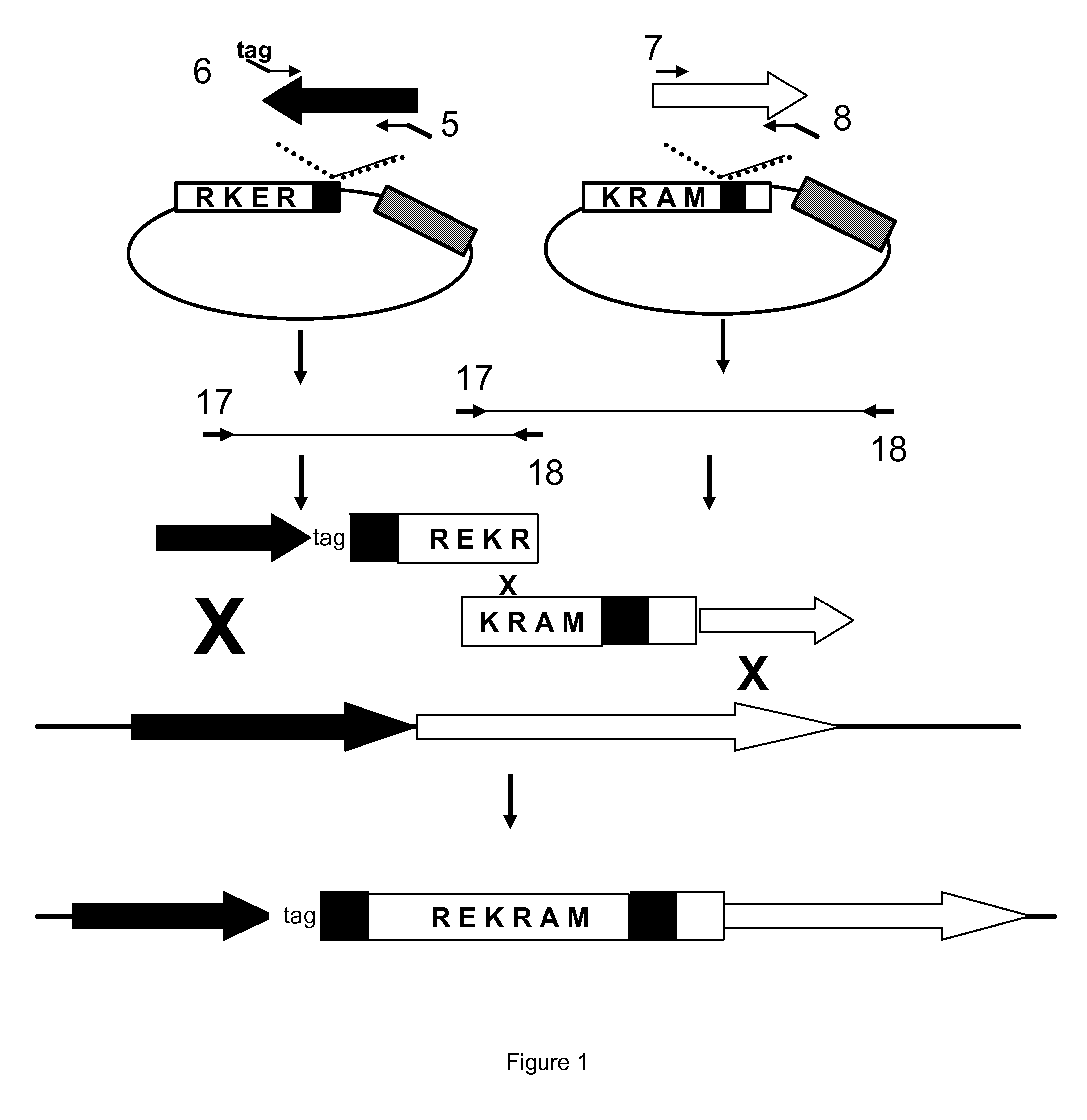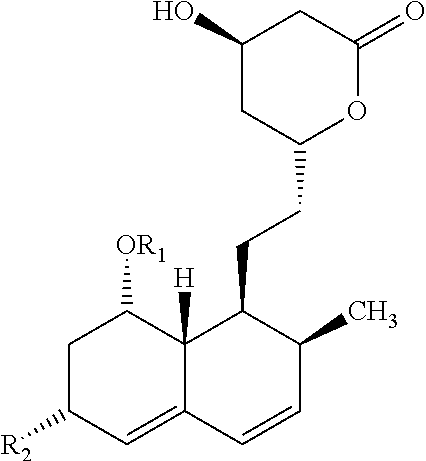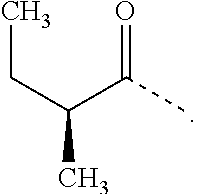Statin production
a statin and fermentation method technology, applied in the field of statin production, can solve the problems of low titers of 60 mg, difficult solution, and limiting the productivity of fungal hosts
- Summary
- Abstract
- Description
- Claims
- Application Information
AI Technical Summary
Benefits of technology
Problems solved by technology
Method used
Image
Examples
example 1
Deletion of Penicillium chrysogenum Gene Pc18g05230 (SEQ ID NO 1) Encoding a HMGR Enzyme
[0068]The gene Pc18g05230 was identified as a HMGR encoding gene. In order to prevent the transcription of this gene a selection marker gene was inserted between the promoter and the open reading frame (ORF). To this end the promoter and the ORF were PCR amplified using the oligonucleotides SEQ ID NO 5 plus 6 and SEQ ID NO 7 plus 8, respectively (see FIG. 1). Phusion Hot-Start Polymerase (Finnzymes) was used to amplify the fragments. The fragments obtained are 1539 and 2514 base pairs (bp) in length (SEQ ID NO 31 and SEQ ID NO 32) and contain a 14 bp tail suitable for the so-called STABY cloning method (Eurogentec). From the standard STABY vector, pSTC1.3, two derivatives were obtained. One, pSTamdSL (SEQ ID NO 39), was used for cloning the PCR amplified promoter (SEQ ID NO 31). The other, pSTamdSR (SEQ ID NO 40), was used for cloning the PCR amplified ORF (SEQ ID NO 32). pSTamdSL was constructed...
example 2
Deletion of Penicillium chrysogenum Gene Pc16g05060 (SEQ ID NO 9) Encoding a HMGR Enzyme
[0070]The gene Pc16g05060 was identified as a HMGR encoding gene. In order to prevent the transcription of this gene a selection marker gene was inserted between the promoter and the open reading frame (ORF). To this end the promoter and the ORF were PCR amplified using the oligonucleotides SEQ ID NO 13 plus 14 and SEQ ID NO 15 plus 16, respectively (see FIG. 1). Phusion Hot-Start Polymerase (Finnzymes) was used to amplify the fragments. The fragments obtained are 1539 and 1514 base pairs (bp) in length (SEQ ID NO 35 and SEQ ID NO 36) and contain a 14 bp tail suitable for the so-called STABY cloning method (Eurogentec).
[0071]From the standard STABY vector, pSTC1.3, two derivatives were obtained. One, pSTamdSL (SEQ ID NO 39), was used for cloning the PCR amplified promoter (SEQ ID NO 35). The other, pSTamdSR (SEQ ID NO 40), was used for cloning the PCR amplified ORF (SEQ ID NO 36). pSTamdSL was co...
example 3
Deletion of the Penicillium chrysogenum HMGR Encoding Genes Leads to Increased Compactin Sensitivity
[0073]Spores of the Penicillium chrysogenum mutants for both HMGR encoding genes, Pc18g05230 (SEQ ID NO 1) and Pc16g05060 (SEQ ID NO 9), were inoculated in liquid media with different amounts of compactin. After 2 days of growth at 25 C both the mutants clearly showed increased compactin sensitivity (see Table 1), illustrating the role of HMGR enzyme levels.
TABLE 1Compactin sensitivity of different Penicillium chrysogenum strainsCompactin (mg / l)Strain00.251.02.51060200ΔhdfA++++++++++++++++++−−−ΔhdfAΔ Pc18g05230+++++++++++++++−−−−−−ΔhdfAΔ Pc16g05060+++++++++++++++−−−−−−
PUM
| Property | Measurement | Unit |
|---|---|---|
| Fraction | aaaaa | aaaaa |
| Fraction | aaaaa | aaaaa |
| Fraction | aaaaa | aaaaa |
Abstract
Description
Claims
Application Information
 Login to View More
Login to View More - R&D
- Intellectual Property
- Life Sciences
- Materials
- Tech Scout
- Unparalleled Data Quality
- Higher Quality Content
- 60% Fewer Hallucinations
Browse by: Latest US Patents, China's latest patents, Technical Efficacy Thesaurus, Application Domain, Technology Topic, Popular Technical Reports.
© 2025 PatSnap. All rights reserved.Legal|Privacy policy|Modern Slavery Act Transparency Statement|Sitemap|About US| Contact US: help@patsnap.com



